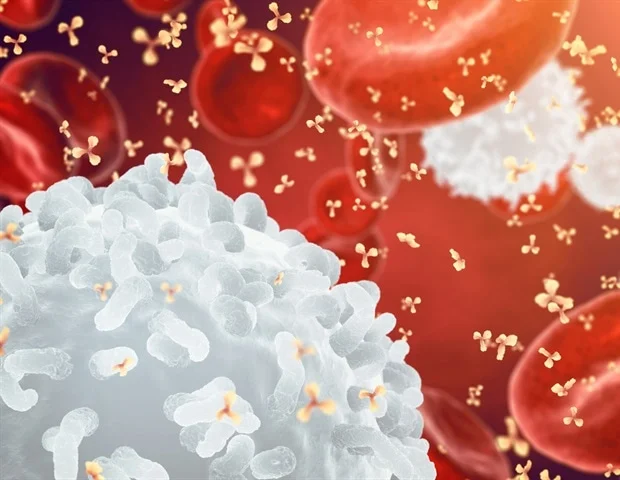
Diagnosing and monitoring an inflammatory gastrointestinal disease may soon become less invasive and more accurate, thanks to the pioneering research and commitment to patient health of three University of Utah physicians. Gerald Gleich, Kristin Leiferman and Kathryn Peterson have developed a way to identify inflammation that occurs in eosinophil-related disorders such as eosinophilic esophagitis (EoE), a chronic and painful inflammatory condition of the esophagus that can strike at any age. EoE affects roughly 300,000 people in the United States alone.
Eosinophils are a type of white blood cell that play a role in the body's immune system. Problems arise if a person has a higher-than-normal number of eosinophils in their blood and/or if eosinophils infiltrate organs and tissues. EoE is one of the most common eosinophil-related illnesses and can currently only be diagnosed on biopsies of esophageal tissue obtained with observation via an endoscope, a camera attached to a flexible tube that is inserted into a patient's throat.
Endoscopies can be painful, time-consuming and inconclusive, and may carry some risks--all of which discourages patients from undergoing the procedure. Biopsies can also be falsely negative if, for example, all of the cells have broken apart and are no longer identifiable. Additionally, the disease is patchy, and biopsies that only reflect a very small portion of the esophagus may miss areas of inflammation.
Gleich, professor of internal medicine and dermatology at the U, discovered that eosinophils contain a major basic protein, a toxic substance that damages tissue where it is deposited after eosinophils release it, causing inflammation. He and his team also identified a compound that can bind to major basic protein.
If a patient swallows this proprietary imaging agent, X-ray-like images will reveal inflamed tissue in which eosinophil major basic protein is deposited."
Gerald Gleich, Professor of Internal Medicine and Dermatology, University of Utah
In addition to confirming that EoE is causing the pain, the imaging also will identify precisely where the affected tissue is in the esophagus and how much of the esophagus is affected.
NexEos, a new life-sciences startup based in Wayne, Pennsylvania, plans to advance and commercialize the diagnostic test developed by Gleich and his colleagues through a license from the U's Center for Technology & Venture Commercialization (TVC).
"We've seen a pronounced increase in EoE sufferers over the past 20 years, but it is unclear why," said Gleich. "More rapid and accurate diagnosis could help us solve that mystery, and also, hopefully, help determine what is triggering the patient's disease to direct treatment."
NexEos is a subsidiary of pharmaceutical holding company NeXeption. Steve Tullman, NeXeption's founder and managing member, has followed Gleich's work for 20 years. "Jerry has dedicated much of his career to understanding and ameliorating eosinophil-related disease," said Tullman. "He has found champions in both TVC and me, and we are excited to help carry forth his vision."
"Bringing diagnostics and therapeutics to market is a relay race, and we rely on trusted partners to whom we can pass the baton," said Keith Marmer, TVC's executive director. "NexEos has put in place a strong management team to navigate the regulatory milestones, develop a solid market strategy and secure investment."
NexEos has raised private funding and is applying for Small Business Innovation Research grants through the NIH. Theresa Mansi, a 30-year veteran of the pharmaceutical industry who has been named CEO, views EoE as just the beginning for NexEos. "We can identify eosinophil-related inflammation in the esophagus of patients with EoE," said Mansi. "This new diagnostic also has the potential to identify and diagnose other diseases in which eosinophils are the drivers of inflammation such as eosinophilic asthma and eosinophilic gastroenteritis. We are dedicated to helping improve the quality of life for patients suffering with these chronic conditions. That is what motivates us every day."
University of Utah






No comments
Post a Comment